Diego Velázquez · Las Meninas
1656 – Óleo sobre lienzo – Madrid, Museo del Prado
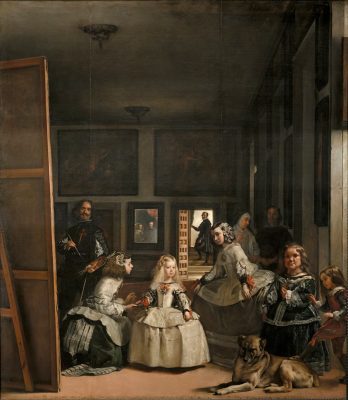
Diego Velazquez – Las Meninas – 1656 – Oil on canvas – Prado Museum – Madrid
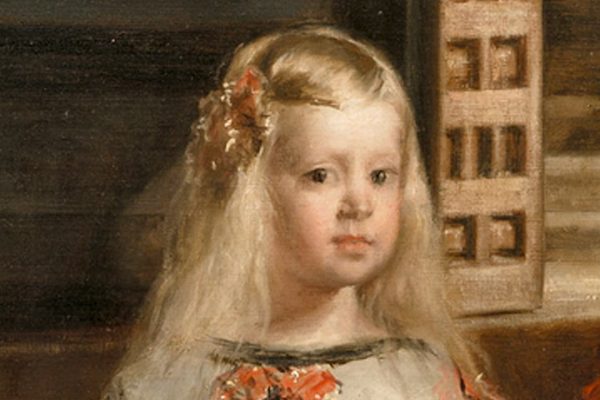
Diego Velazquez – Las Meninas – detail 1
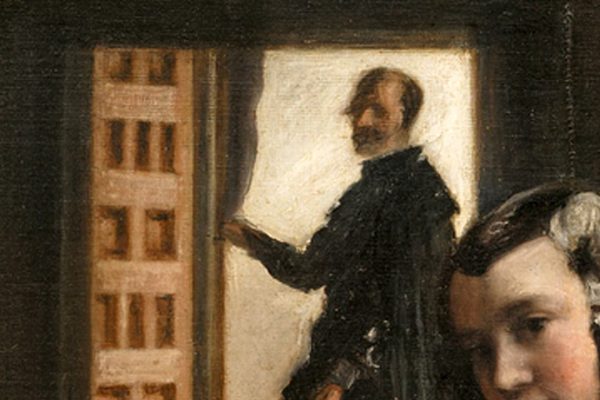
Diego Velazquez – Las Meninas – detail 2
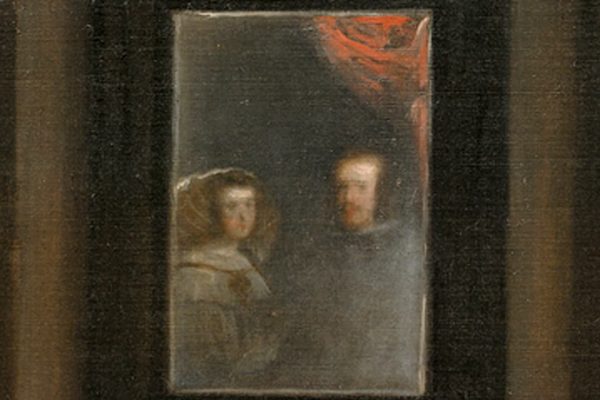
Diego Velazquez – Las Meninas – detail 3
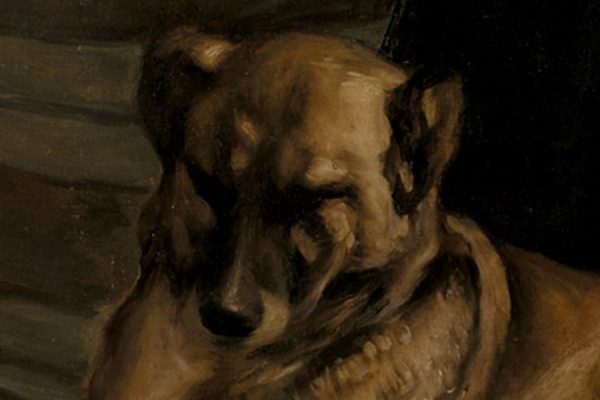
Diego Velazquez – Las Meninas – detail 4
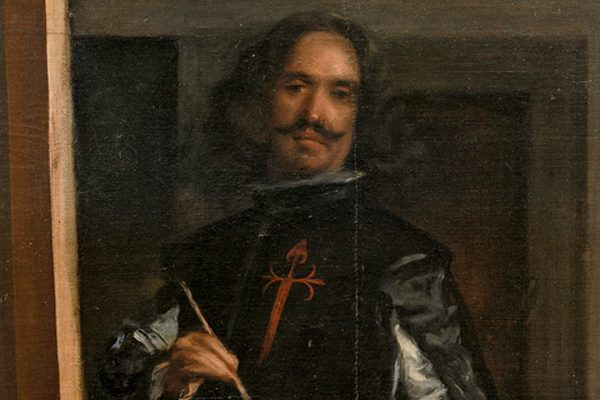
Diego Velazquez – Las Meninas – detail 5
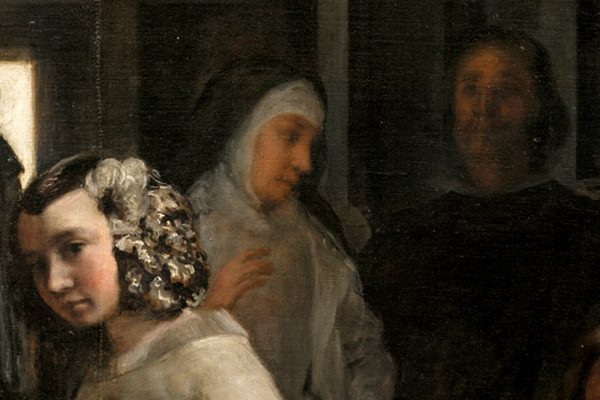
Diego Velazquez – Las Meninas – detail 6
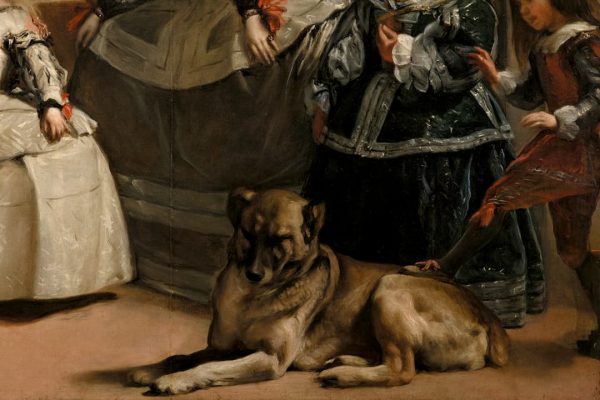
Diego Velazquez – Las Meninas – detail 7
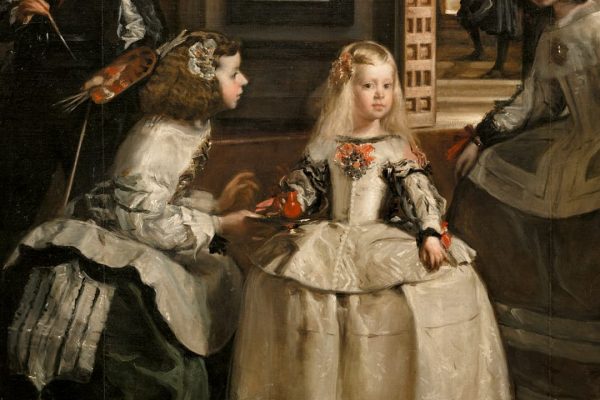
Diego Velazquez – Las Meninas – detail 8
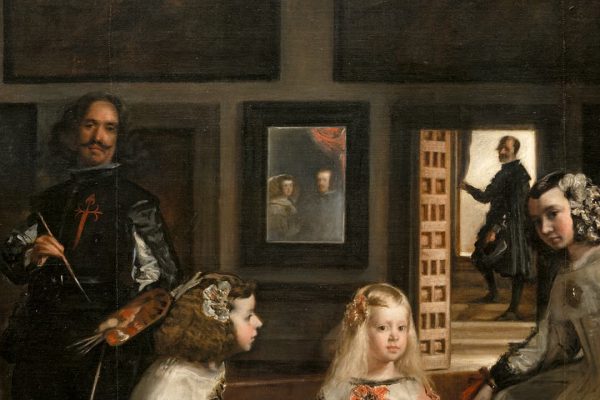
Diego Velazquez – Las Meninas – detail 9
“La teología de la pintura”. Así describió el pintor italiano Luca Giordano (Lucas Jordán) esta obra maestra de Velázquez. Théopile Gautier fue más allá, y en frente de la misma se preguntó «¿pero dónde está el cuadro?«. Y es que Gautier estaba frente a la que es –junto a la obra anterior de Rembrandt- una de las cumbres de la pintura barroca.
La obra es un complejísimo juego de planos y líneas de composición. Velázquez se autorretrata pintando el retrato de los Reyes Felipe IV y Mariana de Austria, cuando la aparición de la Infanta Margarita obliga a interrumpir la sesión. De esta manera, los Reyes, que aparecen reflejados en un espejo en el fondo de la estancia, estarían situados en el mismo plano y situación que el espectador, estableciendo una magistral trama de dentro-fuera en el que el observador siente el impulso de avanzar hacia dentro del cuadro.
Cuenta la leyenda –probablemente más falsa que cierta- que cuando Velázquez presentó la pintura al Rey, este le dijo: “le falta un último detalle”. Y tomando el pincel, pintó sobre el pecho de la figura de Velázquez la cruz de la orden de Santiago. Leyendas aparte, ésta es una de las mejores pinturas de la historia de la humanidad.
Texto: G. Fernández, theartwolf.com
Diego Velázquez · Las Meninas
1656 – Oil on canvas – Madrid, Prado Museum

Diego Velazquez – Las Meninas – 1656 – Oil on canvas – Prado Museum – Madrid

Diego Velazquez – Las Meninas – detail 1

Diego Velazquez – Las Meninas – detail 2

Diego Velazquez – Las Meninas – detail 3

Diego Velazquez – Las Meninas – detail 4

Diego Velazquez – Las Meninas – detail 5

Diego Velazquez – Las Meninas – detail 6

Diego Velazquez – Las Meninas – detail 7

Diego Velazquez – Las Meninas – detail 8

Diego Velazquez – Las Meninas – detail 9
Italian painter Luca Giordano described «Las Meninas» as “The Theology of Painting”. And it is said that Théopile Gautier, admiring this work, asked: «But… Where is the painting?«. Universally praised and admired, «Las Meninas» is –along with the previous work by Rembrandt- the zenith of Baroque Painting.
Velázquez depicted himself painting the royal portraits of Kings Felipe IV and Mariana of Austria, when the irruption of Infant Margarita causes the interruption of the session. In this way, it is implied that the King and the Queen -who can be seen reflected in a small mirror at the background- are located at the same position than the spectator, creating a skilful in-and-out plot in which the observer feels the impulse of advancing towards the interior of the picture.
Although this story is probably more false than true, it is said that when Velázquez presented this painting to Felipe IV, the King said: “it lacks one last detail”. And taking the brush, he painted on Velázquez’s chest the Cross of the Order of Santiago. Legends aside, this work is one of the best paintings of the history of Western Art.
Text: G. Fernández, theartwolf.com










